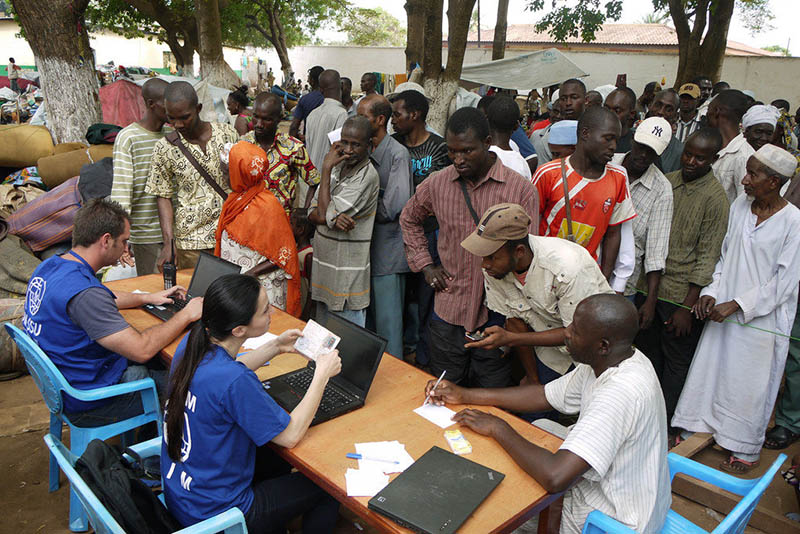In celebration and recognition of Asian American and Pacific Islander Heritage Month, take a look back at some of our favorite past posts from and about the region.
Translating South Asian Classical Medicine for Global Markets

Spice box with turmeric
One of the earliest successful patent challenges relates to the reexamination and revocation of a claim for the wound healing properties of the turmeric plant. This patent revocation is widely cited as the first successful action to reverse bio-pirating activities and has had significant impacts on cultural heritage law and policy.

Suspension, Risk, Suspicion: Field dispatches from Pakistan under COVID-19
Even if momentarily, the pandemic has rendered our assessments of Risk and Safety, nurtured carefully in the worlds of both statistics and racialized narratives of the War on Terror, rather ineffectual.
Hearing the Unknown: Case Studies in Cuba and Taiwan

The role of audio recordings in Cuba and Taiwan takes place on different scales; one has altered foreign diplomacy between two countries with already fraught relations, while the other exists in quotidian form between citizens and the state. In both cases, however, audio recordings have been used as a communicative tool to shift the discourse from questions about meaning to questions about ontology.

Is Uncertainty a Useful Concept? Tracking Environmental Damage in the Lao Hydropower Industry
A dam doesn’t have to collapse for it to be a disaster: even when dams work well they produce a tremendous degree of uncertainty for the people they affect about what might happen and what comes next.
#Hashtag: “I AM one of the 1.4 Billion”
 To understand how the population is lived/felt is not to say that it is innocent […] Instead, it recognizes how decisions, choices, and feelings are made possible by and deeply intertwined with structural forces, and in my case, demographic transformation. Understanding how population prevails in everyday life, in a way, responds to anthropologist/sociologist/demographer Jennifer Johnson-Hanks’ call to be cautious about a “methodological individualism” (2008) by resisting the comfort we find in dichotomizing numbers and humanity. The case of population in China might just provide a valuable lesson about how population and life are mutually constituted.
To understand how the population is lived/felt is not to say that it is innocent […] Instead, it recognizes how decisions, choices, and feelings are made possible by and deeply intertwined with structural forces, and in my case, demographic transformation. Understanding how population prevails in everyday life, in a way, responds to anthropologist/sociologist/demographer Jennifer Johnson-Hanks’ call to be cautious about a “methodological individualism” (2008) by resisting the comfort we find in dichotomizing numbers and humanity. The case of population in China might just provide a valuable lesson about how population and life are mutually constituted.
Blockchain Reactions: The peril and promise of techno-governance for stateless Rohingya

The radical possibility lies in the way the biometric-blockchain assemblage seeks to simultaneously provide Rohingyas with evidence of their existence—by iteratively constituting their identity with each additional transaction recorded—even as that new identity becomes that which constitutes the platform for accessing new opportunities (bank accounts, loans, etc.), transforming the trajectories of that existence.
Cambodia in the time of COVID-19: Conceptions, perceptions, and approaches to the novel coronavirus
 While there was an overwhelming preference for using biomedicine for treatment in the event they caught the virus, especially among younger couples with children, several people mentioned that TKM could be used to alleviate many COVID-19 symptoms. As one interviewee explained, “Coronavirus is just a mixture of issues we already know how to cure with TKM.”
While there was an overwhelming preference for using biomedicine for treatment in the event they caught the virus, especially among younger couples with children, several people mentioned that TKM could be used to alleviate many COVID-19 symptoms. As one interviewee explained, “Coronavirus is just a mixture of issues we already know how to cure with TKM.”

Optics and Fluidity: Evading Surveillance in Hong Kong
It is within this broader context that Hong Kongers question surveillance systems across scales of sovereignty and political space to fundamentally challenge whose “security” and what kinds of bodily and territorial integrities these systems supposedly serve.

The Migrant’s Right to a Digital Identity
Does the creation of a digital identity database really fulfill the “right” to a legal identity for migrants?
What do Japanese Internet Trolls think of Trump?

Elizabeth Rodwell braves the depths of 5chan to find out why Japanese internet trolls are obsessed with Trump.
Workers’ fictive kinship relations in Mumbai app-based food delivery

Working in the gig-economy has been associated with economic vulnerabilities, however there are also moral and affective vulnerabilities as workers find their worth measured everyday by their performance of—and at—work and in every interaction and movement.
